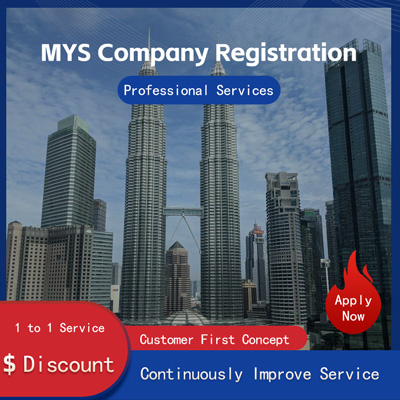
Must-Read! Unveiling Cross-Border Consumer Habits Worldwide!
Essential Read! A Look at Cross-Border Consumer Habits Around the World-Don’t Miss This!
With the advancement of globalization and the progress of internet technology, cross-border e-commerce has become an undeniable commercial trend. More and more businesses are turning their attention to international markets, and understanding the shopping habits of consumers in different countries has become a crucial prerequisite for successfully expanding overseas markets. Today, we will review the cross-border consumer habits of several major countries to help everyone better understand these differences.

First, let’s take a look at the U.S. market. The United States is one of the largest consumer markets globally, and its consumers typically have high demands for product quality and brand reputation. According to a report from Statista, American consumers pay close attention to factors such as product authenticity, shipping speed, and after-sales service when purchasing cross-border goods. American consumers generally like to get shopping inspiration through social media platforms, particularly visually-oriented social networks like Instagram and Pinterest. Companies aiming for success in the U.S. market need to focus on building their brand image and ensure that logistics delivery can meet the demand for rapid delivery.
Next, let’s move on to the European market. Europe consists of numerous countries and regions, each with its own cultural characteristics and consumption habits. For example, German consumers tend to choose cost-effective products while placing great importance on environmental protection and sustainability. French consumers, on the other hand, place greater emphasis on fashion sense and personal taste, and they are willing to pay a premium for high-quality products. In the UK, due to the depreciation of the pound sterling after Brexit, many British consumers are turning to more price-advantaged cross-border goods. It is worth noting that the EU recently implemented new VAT policies, which is an important change for cross-border e-commerce sellers that requires special attention.
The Asian market also cannot be overlooked. Japanese consumers are renowned for their refined lifestyle, seeking high-quality and beautifully designed products. Korean consumers are enthusiastic about trying new things, especially electronic products and beauty items. In China, the popularity of mobile payments has made consumers more reliant on their phones for online shopping. Alibaba's Tmall International and JD Global Purchase are among the main channels through which Chinese consumers buy cross-border goods. Additionally, Chinese consumers place great importance on promotional activities; during events like Singles' Day and 618 Grand Promotion, there are often massive buying frenzies.
The Middle East region is another fast-growing market. Consumers in countries like the UAE and Saudi Arabia have relatively high income levels and a strong demand for luxury and high-end consumer goods. However, merchants need to consider the local culture and customs in the Middle East; for instance, female consumers may prefer clothing styles that cover the entire body.
Finally, let’s examine the Latin American market. Brazil and Mexico are the main economies in this region, and their consumers show a strong preference for localization. This means that companies need to use Spanish or Portuguese in their promotions and integrate local festivals and cultural elements. The logistics infrastructure in the Latin American market is relatively weak, so improving delivery efficiency and service quality is particularly important.
In summary, consumers in different countries have their own unique habits and preferences when purchasing cross-border goods. As cross-border e-commerce practitioners, we need to thoroughly understand the characteristics of our target markets, formulate corresponding marketing strategies, and continuously optimize supply chain management to remain invincible in the tide of globalization. I hope this article provides some valuable reference information to help your cross-border e-commerce business thrive!
Still have questions after reading? More than 98,000 users have contacted us. Please fill in the following information to obtain business information.

Service Scope
MoreRecommended for You
- Overseas Influencer Blacklist Lookup Guide 2 Tools to Help You Avoid Risks
- What Is TK123? The Must-Have Tool for TikTok Sellers
- How to Use Facebook Dynamic Ads Campaigns? A Guide to Creating Dynamic Ads
- CIMB Bank Account Opening Guide
- Optimizing Sales Strategies for the Back-to-School Season in Overseas Student Markets
- Japan E-commerce Market Analysis and Keyword Research Tool Recommendations
- What Is the Amazon High Return Rate Tag? How to Avoid Being Tagged?
- Amazon Marketing Platform Levanta Analysis
- Amazon Low-Price Store Product Search Guide
- A Comparative Analysis of KOLs and KOCs in Overseas Influencer Marketing
- How Can MercadoLibre Sellers Achieve Explosive Sales Growth?
- Top 10 eBay Data Analysis Tools Recommended
- Common Japanese Search Engines Abbreviated List
- Ozon Russia E-commerce Platform Entry Requirements Analysis
- How to Run Google Shopping Ads for Independent Websites? Detailed Step-by-Step Analysis
- The TM Mark™ is a Trademark Indicator.
- SF Express International Business Overview
- The Future of Amazon Prime Day 2025 Amazon Sale Event Dates
- Italy VAT Guarantee New Policies and Payment Methods
- Recommended Payment Methods for Cross-Border E-Commerce in Russia


 ONE
ONE








Customer Reviews
Small *** Table
December 12, 2024The experience was very good. I was still struggling to compare it with other companies. I went to the site a few days ago and wanted to implement it as soon as possible. I didn't expect that everything exceeded my expectations. The company is very large, with several hundred square meters. The employees are also dedicated and responsible. There is also a wall of certificates. I placed an order on the spot. It turned out that I did not make a wrong choice. The company's service attitude is very good and professional. The person who contacted me explained various things in detail in advance. After placing the order, the follow-up was also very timely, and they took the initiative to report the progress to me. In short, I am very satisfied and recommend this company!
Lin *** e
December 18, 2024When I first consulted customer service, they recommended an agent to me. They were very professional and patient and provided excellent service. They answered my questions as they came in. This 2-to-1 service model is very thoughtful. I had a lot of questions that I didn’t understand, and it’s not easy to register a company in Hong Kong. Fortunately, I have you.
t *** 7
December 19, 2024I originally thought that they only did mainland business, but I didn’t expect that they had been doing Hong Kong business and were doing very well. After the on-site interview, I decided to ask them to arrange the registration of my Hong Kong company. They helped me complete it very quickly and provided all the necessary information. The efficiency was awesome. It turns out that professional things should be done by professionals.👍
b *** 5
December 16, 2024In order to register a company in Hong Kong, I compared many platforms and stores and finally chose this store. The merchant said that they have been operating offline for more than 10 years and are indeed an old team of corporate services. The efficiency is first-class, and the customer service is also very professional.